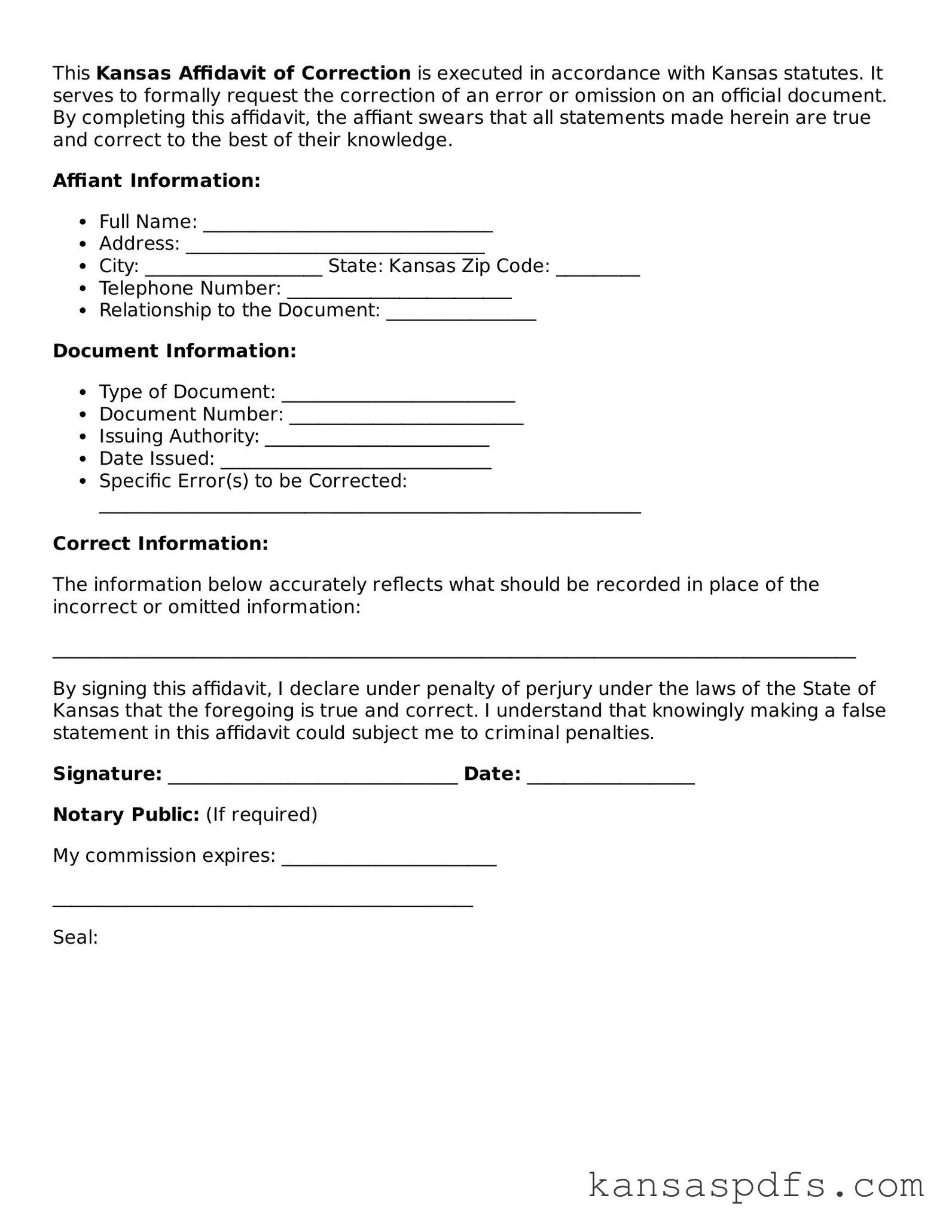What is the purpose of the Kansas Affidavit of Correction form?
The Kansas Affidavit of Correction form is primarily used to correct errors that have been made on official documents related to the ownership or title of property, including vehicles or real estate. Errors might include misspelled names, incorrect VIN numbers, or incorrect property descriptions. Filing this form ensures that these inaccuracies are formally corrected in public records.
Who should complete the Kansas Affidavit of Correction form?
Any individual or entity that discovers an error on a legal document regarding property they own or have an interest in should complete the Kansas Affidavit of Correction form. This is especially critical for those looking to sell or transfer property, as accurate documents are necessary for such transactions.
What information is required to complete the form?
To fill out the form correctly, you will need to provide specific information including the document number of the record with the mistake, a description of the error, and the correct information. Additionally, the person completing the form must sign it in the presence of a notary public to validate the correction.
Where can one obtain the Kansas Affidavit of Correction form?
The form is available through the Kansas Department of Revenue or any local office handling vehicle registrations or property records. Additionally, one might find it on official state websites, ensuring you have access to the most current version of the form.
Is there a fee to file the Kansas Affidavit of Correction form?
Fees associated with filing the Affidavit of Correction can vary depending on the type of document being corrected and the office where the form is being filed. It is advised to contact the specific department or visit their website for detailed information regarding any potential charges.
What happens after the Kansas Affidavit of Correction form is filed?
Once filed, the corrected information is reviewed and, if approved, officially updated in the public records. This process may take some time, depending on the specific office and nature of the correction. It may be necessary to follow up to ensure the change has been made and to obtain updated documentation reflecting the correction.
